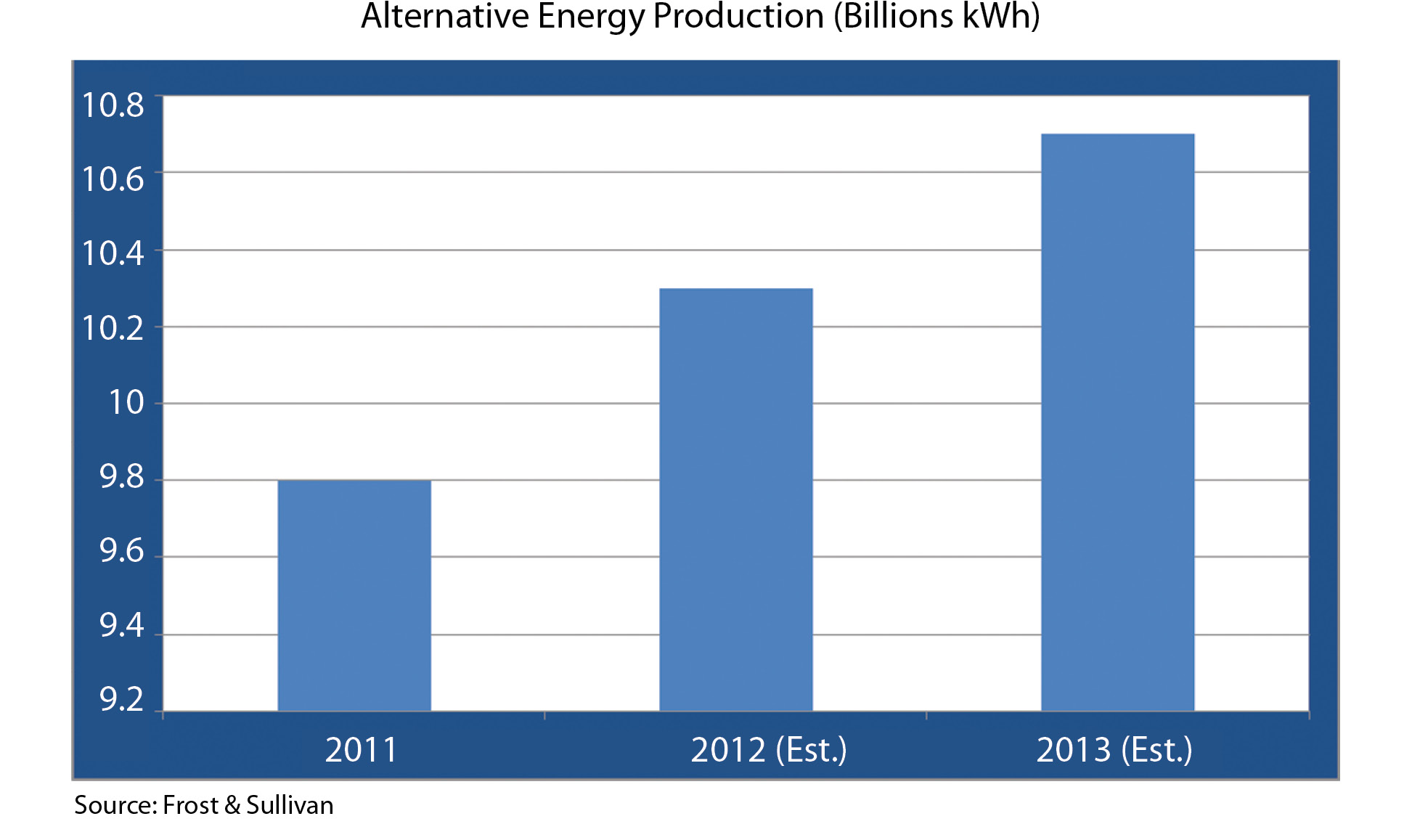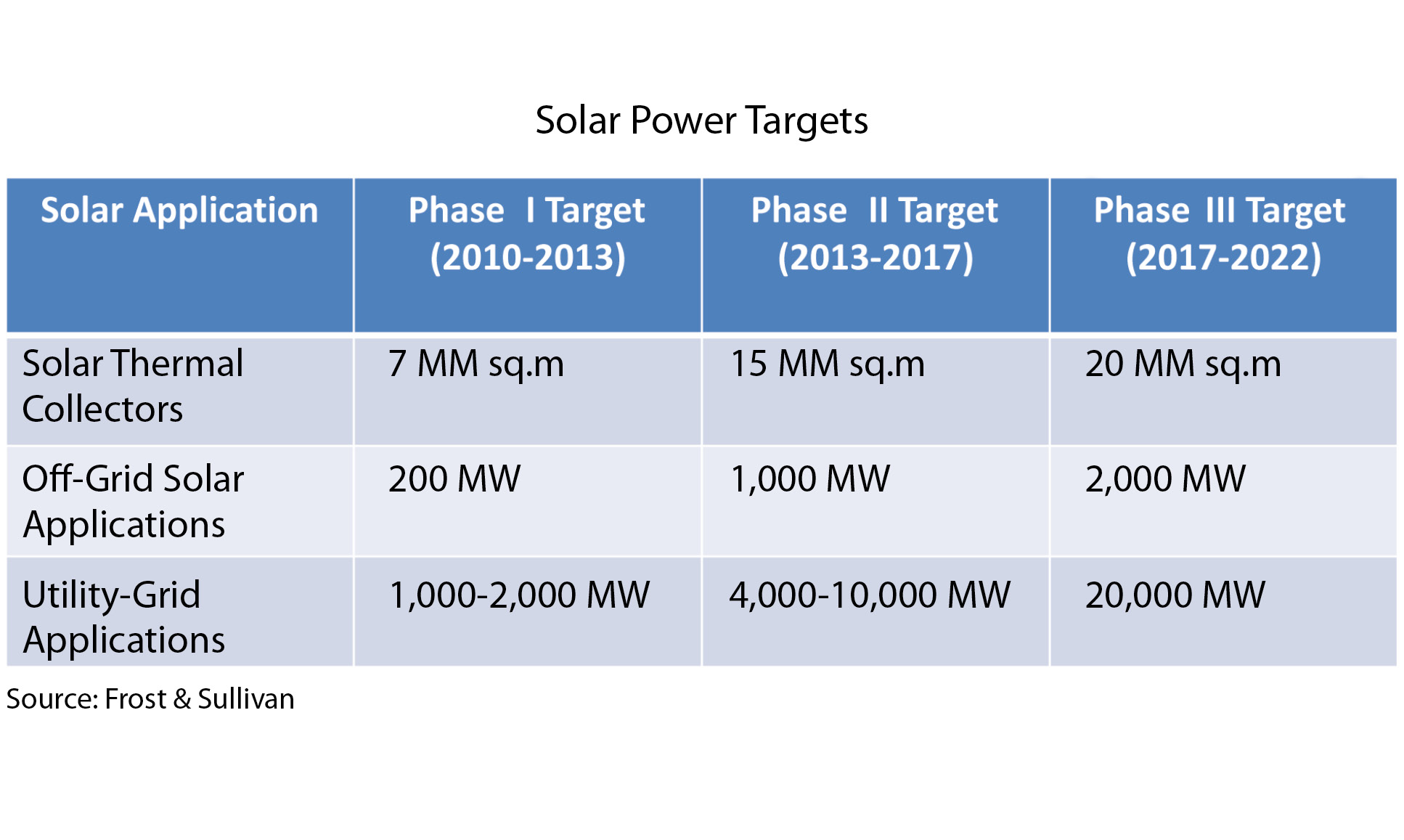

301 Moved Permanently
According to the Indian Ministry of Environment and Forests, more than 487 million people do not have access to electricity in India. Similarly, the World Economic Forum declared that if India were to observe a gross domestic product of more than 9% a year, then it has to increase its energy production by 6.5% every year.
However, India is in a state of persistent energy shortage, with a large demand-supply gap of approximately 12.7%. The Indian Ministry of New and Renewable Energy (MNRE) reports that renewable energy sources contribute approximately 7% of the total installed power capacity in India.
Though the contribution from solar energy has been less than 1%, there has been a positive trend in recent years. Favorable factors such as the tropical climate, the availability of vast barren land in places such as Gujarat, Maharashtra, Tamil Nadu and Rajasthan, and the capability of harnessing capacity of solar energy for at least six hours per day have compelled the government and private sectors to tap into and leverage the solar energy potential.
In fact, India has attracted the world’s attention because of its tremendous solar energy potential, due to its location near the equator. India receives nearly 3,000 hours of sunshine every year, which is equivalent to 5,000 trillion kWh of energy. Although there is huge potential to convert it to electrical energy, the nation is facing a widening gap between energy supply and demand. Thus, there is a growing concern to address the disparity, making it important to tap solar potential to meet energy needs.
Government backing
As a result, the Indian government is looking to explore opportunities in alternative energy. Considering India’s solar potential, the government has rolled out various policies and subsidy schemes to promulgate and increase the contribution of solar energy. For instance, due to increasing demand for electricity, India has targeted 20 GW of solar power by 2022 in its Jawaharlal Nehru National Solar Mission (JNNSM).
In order to nullify the energy demand-supply gap, it is essential to concentrate on two factors: power generation and power transmission.
According to the International Energy Agency, hydrocarbons account for the majority of India’s energy use. Coal and oil together represent about two-thirds of total energy use. In addition, natural gas now accounts for a 7% share, which is expected to grow with the discovery of new gas deposits. Combustible renewables and waste constitute about one-fourth of Indian energy use, while other renewables - such as wind, geothermal, solar and hydroelectricity - represent a 2% share of the Indian fuel mix. Nuclear holds a 1% share.

From the energy generation point of view, thermal-generated power accounts for more than 80% of electricity in India, with coal acting as a predominant source for such energy generation. India, which is one of the top three consumers of coal in the world, is facing a resource shortage in terms of quantity and quality (low-quality coal affects both the power-generating capacity and public health). To meet the energy demand, India imports approximately 11% of its total consumption. Although there is no quick fix for these problems, partial focus may be shifted toward the alternative energy sector, as it could supplement the country’s energy production.
Today, domestic coal-based power generation is the cheapest electricity source, but future scenarios suggest change in this situation. Already faced with crippling electricity shortages, the price of electricity traded internally has touched approximately 14 cents per unit for base loads and around 16 cents per unit during peak periods.
The situation will also change as the country moves toward imported coal to meet its energy demand. The price of power will have to factor into the availability of coal in international markets, as well as the cost of developing an importation infrastructure. It is also evident that as the cost of environmental degradation is factored into the mining of coal, as it must, the price of this raw material will increase.
In the situation of energy shortages, the country is increasing the use of diesel-based electricity, which is both expensive - costing as much as 29 cents per unit - and a pollutant.
In July 2012, a massive northern grid failure left more than 300 million people without electricity. The grid failure affected at least eight states, including Delhi, Punjab, Haryana, Uttar Pradesh, Himachal Pradesh, Rajasthan, Jammu and Kashmir. The grid failure disrupted trains, hospitals and even New Delhi’s metro system.
Although no formal conclusion was reached for this massive blackout, it is believed to be from frequent spikes in energy demand, as well as an insufficient and outdated transmission facility.
On the other hand, southern states such as Tamil Nadu, Andhra Pradesh and Karnataka also face acute power shortages. Tamil Nadu, which is one of the primary producers of solar and wind energy, is crippled with power shortage to the extent that semi-urban and rural areas face at least 14 hours of power cuts daily. Therefore, it is absolutely essential to promote solar energy and alleviate the existing power shortage crisis.

Solar solution
From an energy security perspective, solar could be considered a promising alternative. Theoretically, a small fraction of total solar energy (if captured effectively) can meet the entire country’s power requirements. It is also clear that given the large proportion of poor and energy underserved populations in the country, every effort needs to be made to exploit the relatively abundant sources of energy available to the country.
Recently, two scientists from the Indian Institute of Science, Bangalore said that solar energy could be one of the primary contributors in alleviating the nation’s energy problem. According to their study, 4.1% of the total uncultivable and wasteland area in India is enough to meet the projected annual demand of 3,400 TWh by 2070 with solar energy alone. The scientists were of the opinion that land availability was not a limiting constraint for solar implementation, as most had previously believed.
The Indian government has established the MNRE, India Renewable Energy Development Agency (IREDA) and Solar Energy Centre (SEC) to promote solar energy in India. MNRE acts as a nodal unit for activities related to solar energy. IREDA is a publicly limited company that promotes, develops and extends financial assistance for renewable energy, energy efficiency and energy conservation projects. SEC develops and promotes solar technology and its applications through product development.
The National Solar Mission is a supportive arm of India’s National Action Plan on Climate Change, which helps increase the popularity of solar thermal technologies for domestic and commercial applications in both rural and urban sectors. MNRE took a bold action in 2009 to launch the JNNSM with a vision of India as a global leader in solar energy. To achieve this, the mission has a three-phase approach with specific targets for each phase. The mission includes achieving grid parity by 2022 and equality with coal-based power generation in 2030.
The Indian government should take the lead in promoting solar technology both at centralized and decentralized levels. The objective of the program is to provide energy access to a population set that has limited or no access to grid-based systems. In order to achieve success even at a grassroots level, the government has plans to encourage both domestic and foreign players in setting up facilities in the country. In fact, the JNNSM would consider up to a 30% capital subsidy for promoting such innovative applications of solar energy and would structure a non-distorting framework to support entrepreneurship, upscaling and innovation.
The JNNSM has invited industrial players to place bids so the government can allocate solar PV projects. The allocation was carried out in two batches: one in 2010-2011 and the other in 2011-2012. For Phase I, the aggregate was pegged at 150 MW, whereas for Phase II the aggregate was set at 350 MW.
Successful industrial players who took part in Phase I of the bidding have already begun their projects. Similar to Phase I, the selection of projects for Phase II was conducted through reverse bidding. Only 20 bidders that offered the highest discount on the base price of approximately 29 cents per kilowatt-hour were selected for Phase II. The average bid price was 23 cents per kWh after Phase II bidding. Most of the projects will be carried out in Rajasthan because of its many favorable factors, such as a better transmission network compared to that of other states, land availability on concession and availability of sunlight throughout the year.
Projects
Clover Solar is currently setting up a 2.2 MW PV power plant in Baramati, Maharashtra, at an investment of approximately $7.5 million. The proposed plant will generate more than 4 million kWh of power per annum. The company was one of 16 companies in India and three in Maharashtra to win contracts under the JNNSM. In order to increase its yield, the company has incorporated solar trackers that are expected to increase energy production by at least 15%.
The Gujarat government has taken many initiatives in setting up solar plants across the state. For instance, the state government has set up Asia’s largest solar park in Charanka. The Charanka Solar Park has already started to generate 250 MW of power of its rated 500 MW. With the addition of private players such as Ambani Group, Adani Group and Tata Group in the state, Gujarat has become the leading provider of solar energy in India and contributes up to two-thirds of the 900 MW of power generated in the country. The government is trying to emulate such successful projects in other parts of the state, including in Rajkot, Surat, Bhavnagar and Vadodara.
On the other hand, the Maharashtra government’s 150 MW PV solar energy project in Dhule was temporarily stalled because of the lack of a clearance certificate from the state forest department. The Ministry of Environment and Forests has since issued a clearance certificate for the project. The total cost of the plan is estimated at approximately $365.72 million, of which $73.07 million would come from the state government. The rest of it would be from Messers KFW, a German financial institution. Upon commissioning, this project is expected to contribute 1% of India’s installed power capacity.
Though the coming solar projects and the increased production have been motivating factors, there are a few challenges that need to be addressed by the government, industrial and academic sectors. These challenges include the cost of manufacturing, non-uniform power supply across states, a lack of standards and others, all of which can be addressed by collaborative efforts from both government and industrial players.
Furthermore, adequate and periodic funding from the government for research activities should be carried out so that innovative techniques can be implemented to reduce installation costs. This is crucial, as it could help reduce the cost per kilowatt of power generated.
Currently, the state governments have to bear high solar power rates for public consumption at a subsidized rate. This is not economically viable and could be detrimental to the nation’s development. Thus, the government should explore ways to overcome these challenges and deploy solar power at least as a modular source of power.
If effectively harnessed through its National Solar Mission, solar energy could help alleviate India’s growing power deficit. One of the practical solutions is to decentralize the energy production and distribution model in rural areas. Adopting such a model in places such as Gujarat and Rajasthan could help drive independence from grid-based power for domestic consumption.
However, for such models to succeed, it is crucial for both the local communities and industry players to work synergistically. At the same time, innovative technologies must be employed, with aggressive supporting measures to reduce the cost of panel production. This could boost the opportunity for solar energy to attain grid parity. Among all stakeholders, the Indian government should take the initiative to invite national and international solar industry players to set up shop, so research and development laboratories and solar farms can accelerate the growth of the solar PV market in India. If suitable opportunities for industry players to crossbreed technologies and increase the awareness of solar energy in both urban and rural divisions present themselves, India has strong potential to become one of the major players in the global market. S
Industry At Large: Global Markets
A Peek Inside India, Where Solar Could Change Everything
By Avinash Iyer
Right now, the nation is suffering from a massive energy supply-demand imbalance, and solar power is being eyed as a possible remedy.
si body si body i si body bi si body b
si depbio
- si bullets
si sh
si subhead
pullquote
si first graph
si sh no rule
si last graph